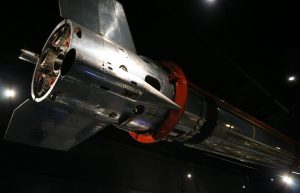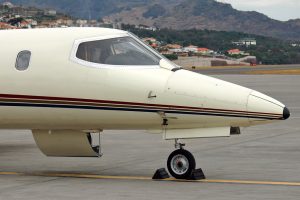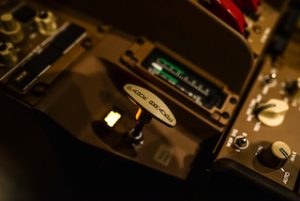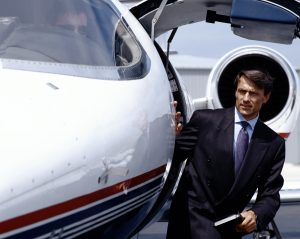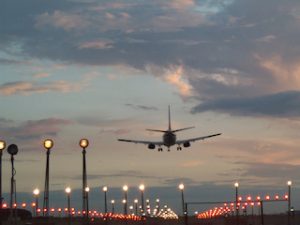Costs Of Top 10 Aviation Schools
 Pursuing a career as a pilot is a dream for many aviation enthusiasts. However, the journey to the cockpit can come with significant financial implications. Understanding the costs associated with pilot training courses is crucial for prospective students. This article provides an in-depth look at the costs of pilot training courses at the top ten aviation schools, helping aspiring pilots make informed decisions about their education.
Pursuing a career as a pilot is a dream for many aviation enthusiasts. However, the journey to the cockpit can come with significant financial implications. Understanding the costs associated with pilot training courses is crucial for prospective students. This article provides an in-depth look at the costs of pilot training courses at the top ten aviation schools, helping aspiring pilots make informed decisions about their education.
Pilot training costs of top 10 aviation schools
The costs of pilot training at the top 10 aviation schools vary widely depending on several factors, including the school’s location, reputation, type of training offered, and the aircraft used for instruction. Here are some key components that contribute to the expenses:
- Tuition fees: The primary cost associated with pilot training is tuition, which can vary significantly between institutions
- Flight hours: Most pilot training programs require students to log a specific number of flight hours. The cost of flight time can add up quickly
- Additional fees: Students may encounter additional fees for materials, equipment, insurance, and examination costs
- Living expenses: For students attending schools away from home, living expenses can also contribute to the overall cost of training.
Pilot training costs
1) Embry-Riddle Aeronautical university
Location: Daytona Beach, Florida
Tuition costs: The cost of a Bachelor of Science in Aeronautical Science is approximately $50,000 per year. This includes flight training, which can add an additional $15,000 to $20,000 depending on the number of flight hours completed.
Additional fees: Students can expect additional fees for materials, simulator access, and other course-related expenses.
2) Purdue University
Location: West Lafayette, Indiana
Tuition costs: Purdue’s Professional Flight program costs around $36,000 per year for in-state students and about $55,000 for out-of-state students. Flight training can add another $20,000 to $25,000.
Additional fees: Students may incur costs for uniforms, flight supplies, and insurance.
3) University of North Dakota
Location: Grand Forks, North Dakota
Tuition costs: The tuition for the Bachelor of Science in Commercial Aviation is approximately $37,000 for in-state students and $53,000 for out-of-state students. Flight training costs can range from $20,000 to $30,000.
Additional fees: Other expenses may include textbooks, equipment, and fees for various certifications.
4) Florida Institute of Technology
Location: Melbourne, Florida
Tuition costs: The cost for the Bachelor of Science in Aeronautical Science is about $45,000 per year. Flight training costs typically range from $20,000 to $30,000.
Additional fees: Students should budget for uniforms, textbooks, and other materials.
5) California State University, Los Angeles
Location: Los Angeles, California
Tuition costs: The Aviation Administration program costs approximately $18,000 per year for in-state students and around $30,000 for out-of-state students. Flight training can add another $15,000 to $25,000.
Additional fees: Fees for certification testing and flight supplies may also apply.
6) Liberty University
Location: Lynchburg, Virginia
Tuition costs: The cost for a Bachelor’s in Aviation is approximately $22,000 per year. Flight training can range from $25,000 to $35,000, depending on the hours needed to complete the program.
Additional fees: Students should consider additional costs for supplies, equipment, and examination fees.
7) Western Michigan University
Location: Kalamazoo, Michigan
Tuition costs: The aviation flight science program costs around $26,000 for in-state students and about $42,000 for out-of-state students. Flight training can add $20,000 to $30,000.
Additional fees: Additional costs may include materials, certification exams, and uniform expenses.
8) Kent State University
Location: Kent, Ohio
Tuition costs: The Bachelor of Science in Aviation costs approximately $23,000 for in-state students and about $38,000 for out-of-state students. Flight training expenses can range from $15,000 to $25,000.
Additional fees: Students may face fees for flight supplies, certification testing, and other course materials.
9) Central Washington University
Location: Ellensburg, Washington
Tuition costs: The aviation management program costs about $10,000 per year for in-state students and approximately $25,000 for out-of-state students. Flight training costs can range from $15,000 to $20,000.
Additional fees: Additional costs may include books, supplies, and insurance.
10) Arizona State University
Location: Tempe, Arizona
Tuition costs: The Bachelor of Science in Aeronautical Management degree costs about $31,000 for in-state students and around $47,000 for out-of-state students. Flight training can add another $20,000 to $30,000.
Additional fees: Other expenses may include materials, certification fees, and living costs.
Factors influencing the costs
Geographic location: The location of the aviation school can significantly influence tuition and overall training costs. Schools situated in regions with a higher cost of living or near major airports often have higher operational costs, which can lead to increased tuition fees.
Type of training program: Different aviation programs offer varying degrees of training. Programs that include a broader curriculum, such as degrees in aviation management or aerospace engineering, may have higher tuition costs. Additionally, schools that offer specialised training in areas such as jet operations may charge more.
Aircraft and simulator availability: The type of aircraft used for training, as well as the availability of advanced flight simulators, can also impact costs. Schools that use modern, multi-engine aircraft and sophisticated simulators may have higher operating expenses, leading to increased tuition.
Reputation and accreditation: Top-rated aviation schools often command higher fees due to their reputation and accreditation status. Programs that are recognised by industry bodies or offer exceptional training quality may justify their costs through higher placement rates and better job opportunities for graduates.
Financial considerations
Tuition financing options: Many aviation schools offer financing options to help students manage the cost of training. Students should inquire about payment plans, scholarships, and grants specifically tailored for aviation programs. Additionally, federal student loans can also help alleviate the financial burden.
Budgeting for additional expenses: In addition to tuition, students should budget for various additional expenses that may arise during training. These can include:
-
- Flight supplies: Headsets, flight bags, and other essential gear
- Insurance: Some schools require students to obtain insurance coverage for flight training
- Examination fees: Fees for certification tests and licensing exams.
Long-term value
While the costs of pilot training can be substantial, it’s important to consider the long-term return on investment. A career in aviation can offer competitive salaries, opportunities for advancement, and job security in an industry that is continually evolving. Many pilots find that the initial financial investment pays off significantly over time.
Navigating the costs
Pursuing a career as a pilot is a significant investment, both financially and personally. Understanding the costs associated with pilot training at the top ten aviation schools can help aspiring pilots make informed decisions about their education. While tuition fees can be daunting, the potential for a rewarding and lucrative career in aviation makes the investment worthwhile.
By researching various programs, exploring financial aid options, and budgeting for additional expenses, students can navigate the financial aspects of their training effectively. With careful planning and commitment, aspiring pilots can take to the skies and fulfill their dreams of becoming aviation professionals. The journey may be challenging, but the rewards of a career in aviation are well worth the effort.

